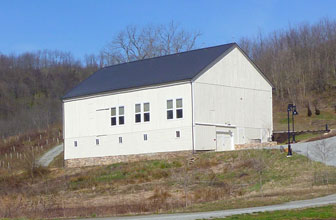Category: Conservation
Trout Unlimited Hosts Climate Change Discussion


Presenters from Carnegie Museum of Natural History (CMNH) and Powdermill Nature Reserve (PNR) shared recently completed research findings and facilitated a discussion on how climate change is impacting our lives, and of particular importance to Trout Unlimited (TU), our coldwater fisheries. Our country has witnessed more frequent and severe weather events over recent years and the intensity is only increasing. We’re all part of the problem…but we can also all be part of the solution.
Laurie Giarratani, Director of Education for CMNH, and Alexis Thorbecke, Programs Manager at PNR were guest speakers March 6th at Forbes Trail Trout Unlimited monthly meeting. The event was held in Greensburg at the Westmoreland Conservation District’s office on Donohoe Road. The purpose was to help educate TU members and the local community on the science behind climate change, its potential adverse impacts on our planet, and how we can get involved to help remediate some of those problems. After explaining how and why we’re seeing radical changes in our climate, the group discussed means by which individuals can make lifestyle changes that will help minimize their carbon footprint on the earth.
For TU, the presentation came at a perfect time as they prepare to roll out a new initiative titled “Priority Waters”. This is a national TU program to be implemented at the state level. In Pennsylvania, TU has identified four conservation landscapes designated for special attention to protect coldwater fisheries and their watersheds. The Laurel Highlands is one of those. The landscape covers five TU chapters who met the week before to strategize how we can conserve, protect and restore the coldwater fisheries in this region. The group is in the process of developing a five-year strategic plan, a vision statement and mission statement. It will include specific actions that can be taken by TU and community partners to protect our most precious wild trout and their habitat.
Special guests at the event were Tom McCartney from TU’s Penn’s Woods West Chapter. Tom serves on TU’s National Leadership Council and is a volunteer member of their Climate Change Working Group. Also participating in the discussion was Dr. John Wenzel, Executive Director, Conemaugh Valley Conservancy. John has been involved in implementing TU’s recently completed Coldwater Conservation Plan (CCP) for Linn Run, located in the Laurel Highlands.
Just like with completing the Linn Run CCP, addressing climate changes impacts on our headwaters will take a community effort. If remediation efforts are to be undertaken to protect tree canopies that cool the streams, or habitat be developed to provide protective hideaways for trout during droughts, a collaborative effort will be needed with the Department of Natural Resources, the PA Fish & Boat Commission, Western PA Conservancy and many other resource conservation agencies and organizations. Our communities are learning that TU is not a fishing club. Our mission is to conserve, protect and restore our coldwater fisheries and their watersheds. We welcome a seat at the table to address the impacts of climate change on our trout streams.
Rock Run Water Tests for July 2023
The testers were greeted with heavy rain on the morning of July 1, but the skies soon cleared and they were able to conduct monthly water tests at the mouth of Rock Run.
The storm raised water levels from 1.9′ to 2.0′ in less than an hour and with additional rain later in the day peaked at 3.93′ with a flow rate of 565 ft.3/sec at 9:30 pm.
Wow!
Here’s the test results as of 10:30 am, Saturday, July 1:
Air Temperature: 65°F
Water Temperature: 59.5°F
pH: 7.0
Alkalinity: 7.7
Linn Run Gauge: 2.0′
Linn Run Discharge: 13 ft³./sec
Alkalinity was surprisingly good considering the influx of rain water.
Afterwards, we went up to the headwaters and checked on the limestone sand that was placed in the stream last year.
It is estimated that 90% has been washed down into the stream. We shoveled the remaining sand in closer to the water.
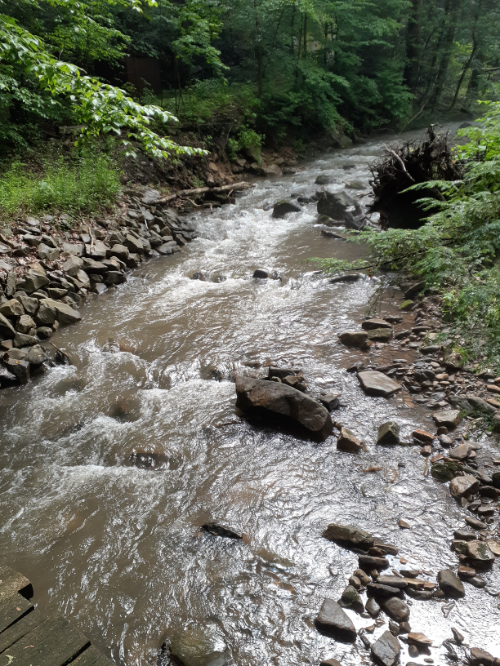
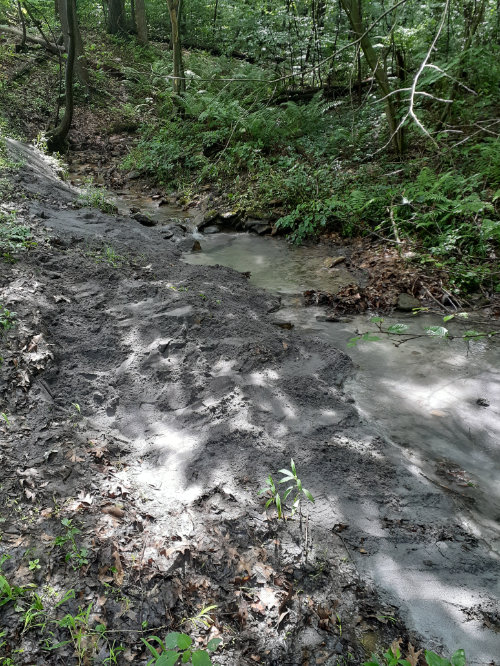
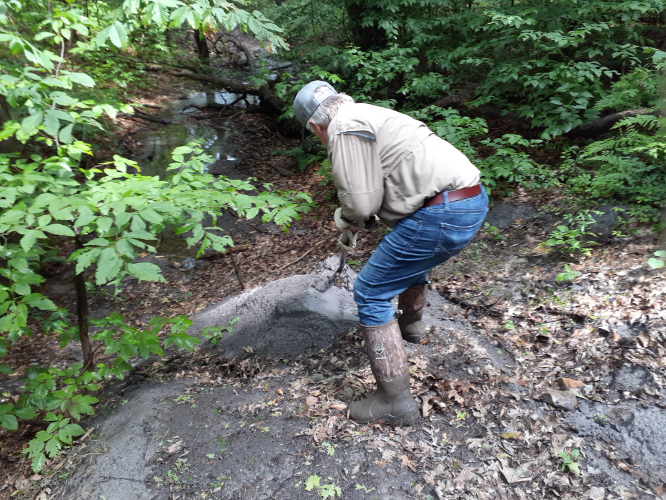
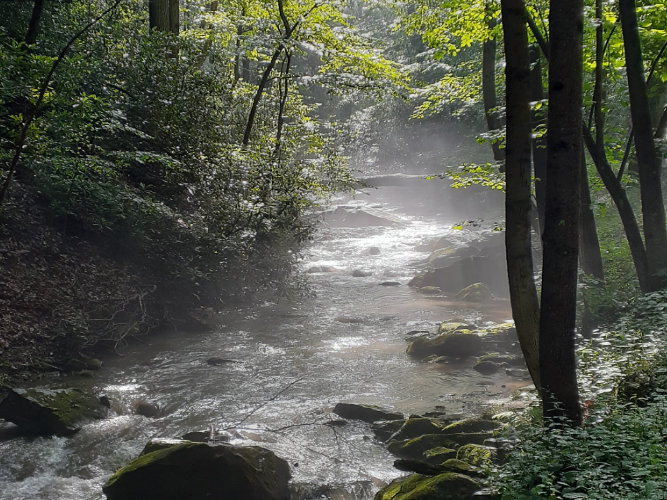
Trout Unlimited Clears Litter Along Loyalhanna Creek
Teams of Forbes Trail Trout Unlimited worked at three locations to pick up litter along the banks of the Loyalhanna on Tuesday, April 18. The section of stream in Ligonier is designated by the PA Fish & Boat Commission as both Delayed Harvest Artificial Lures Only (DHALO) and a PA Select Stream. And Trout Unlimited has included it in their top ten premier trout streams in their Laurel Highlands Trout Trail program. In other words, it’s a very special trout stream because of its natural beauty and superior water quality. Unfortunately, a few thoughtless people continue to ignore the charm of the stream and leave their drink bottles, candy wrappers and bait containers scattered along the trails and banks.
As part of the annual Great American Cleanup of PA and Great Ligonier Valley Cleanup, Forbes Trail partnered with Loyalhanna Watershed Association to pick up trash along the DHALO section, around the causeway at Sleepy Hollow and on Mission Road in Latrobe. Fortunately, it’s a very tiny percentage of the general public who still refuse to manage their wastes properly. And more than likely the same slobs that throw their trash in the same locations every year. TU encourages angler to leave absolutely no trace other than boot prints. And in fact, anglers are asked to carry a bag to pick up trash left by others, leaving the stream banks even cleaner than they find them.
The teams picked up 20 bags of trash and one lawn chair. The most unusual find was a garter snake trying to stay warm inside a discarded bed pillow. They had to clean an illegal dump where someone, possibly a local resident, dumped garbage over the hillside, directly across the stream from the Giant Eagle supermarket. Residents are asked to report illegal dumpers to the PA State Police or Keep PA Beautiful. Littering in PA carries a fine of up to $300. It’s only a few careless people causing the problem. Do your part to report them. It’s your tax dollars that pay Penn DOT to pick up and dispose of all the littler collected along the highways and streams. We can find better ways to celebrate Earth Day than picking up trash left by a few thoughtless litterbugs!
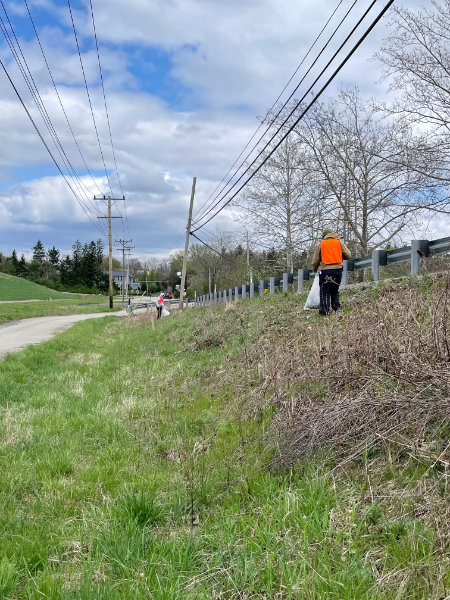

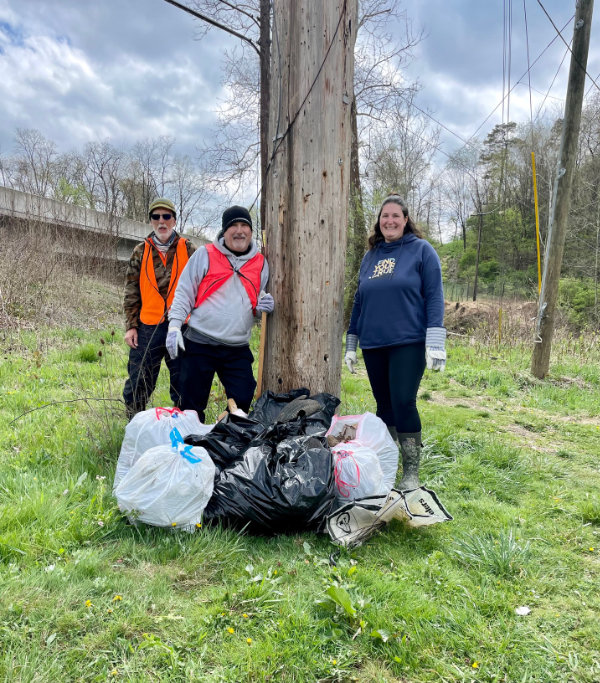
Linn Run Conservation Plan Released
Forbes Trail Chapter of Trout Unlimited debuted their final Linn Run study results at a public meeting on March 30, 2023, at the Powdermill Nature Reserve. Thirty-five guests were present to learn about the overall health of Linn Run watershed and what threats to the stream need to be addressed.
The study began in April of 2021 and was funded with a grant from the Foundation for Pennsylvania Watersheds, a grant-making foundation that invests in efforts to protect healthy, natural streams around the state. The study was a “partnership” effort involving state and local agencies and nonprofit organizations, each bringing unique expertise to the table. Nearly fifty volunteers, including TU members, citizen scientists and professional chemists and entomologists worked on the project for nearly two years.
The specific studies looked at the water quality including potential pollutants such as E. coli, iron oxide, road salt and aluminum which can harm all aquatic life. Extensive sampling done for macroinvertebrates (trout bugs), showed that the main stem and the major tributaries all had a healthy variety and number of bugs.
Teams of volunteers conducted habitat assessments looking at every inch of the stream and tributaries from the first raindrop on Laurel Mountain to where Linn Run passes under the Rt. 381 bridge in Rector. Bank erosion from flash floods, hiking trail washouts, log jams and barriers restricting fish movement were some of the problems discovered. The Hemlock Woolly Adelgid (HWA), a tiny insect that infects the needles of hemlock trees, has been documented and could threaten the canopy over nursery waters.
A limestone treatment system installed on the largest tributary, Rock Run, in 2005 has proven to be effective at raising both the pH and alkalinity of the tributary to where it now supports wild trout reproduction. A similar treatment system might be considered for the headwaters of Linn Run.
The Coldwater Conservation Plan is part of a “process”. The next step will be for TU to meet with partners such as the State Park and Forbes State Forest officials to determine what remediation efforts DCNR might be able to work into their budgets and maintenance plans. Then, decide if grants and more manpower might be needed. Some activities such as clearing log jams after severe floods and monitoring for E. coli, the HWA and gill lice is expected to be an ongoing exercise by the partners.
Overall, Linn Run is a relatively healthy, but somewhat fragile, high gradient mountain stream. It and the surrounding park and forest attract well over 100,000 visitors each year. Linn Run is the “crown jewel” of the watershed and the Partners are committed to Conserving, protecting and restoring it using whatever resources are needed.
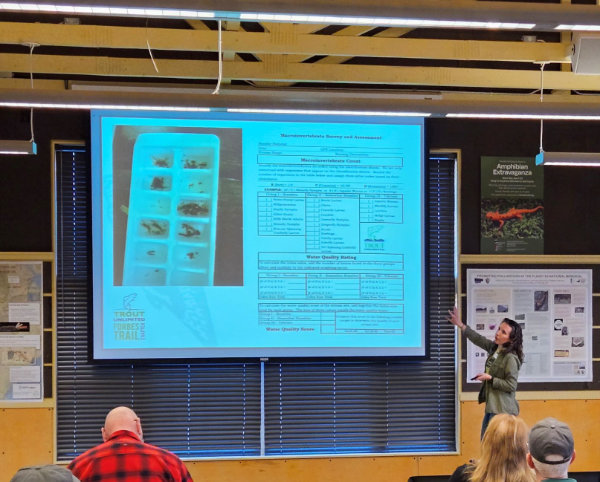
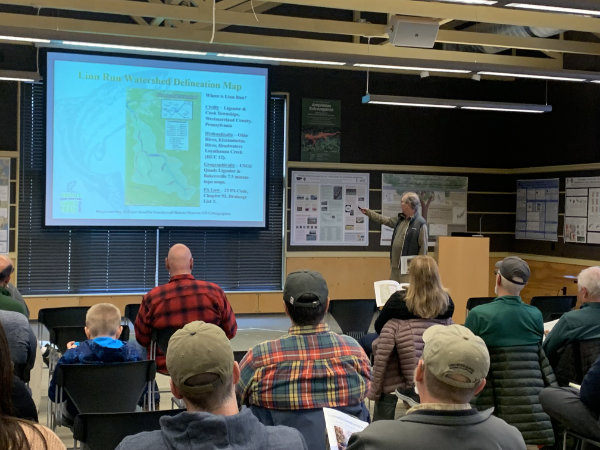
Rock Run Water Tests for November
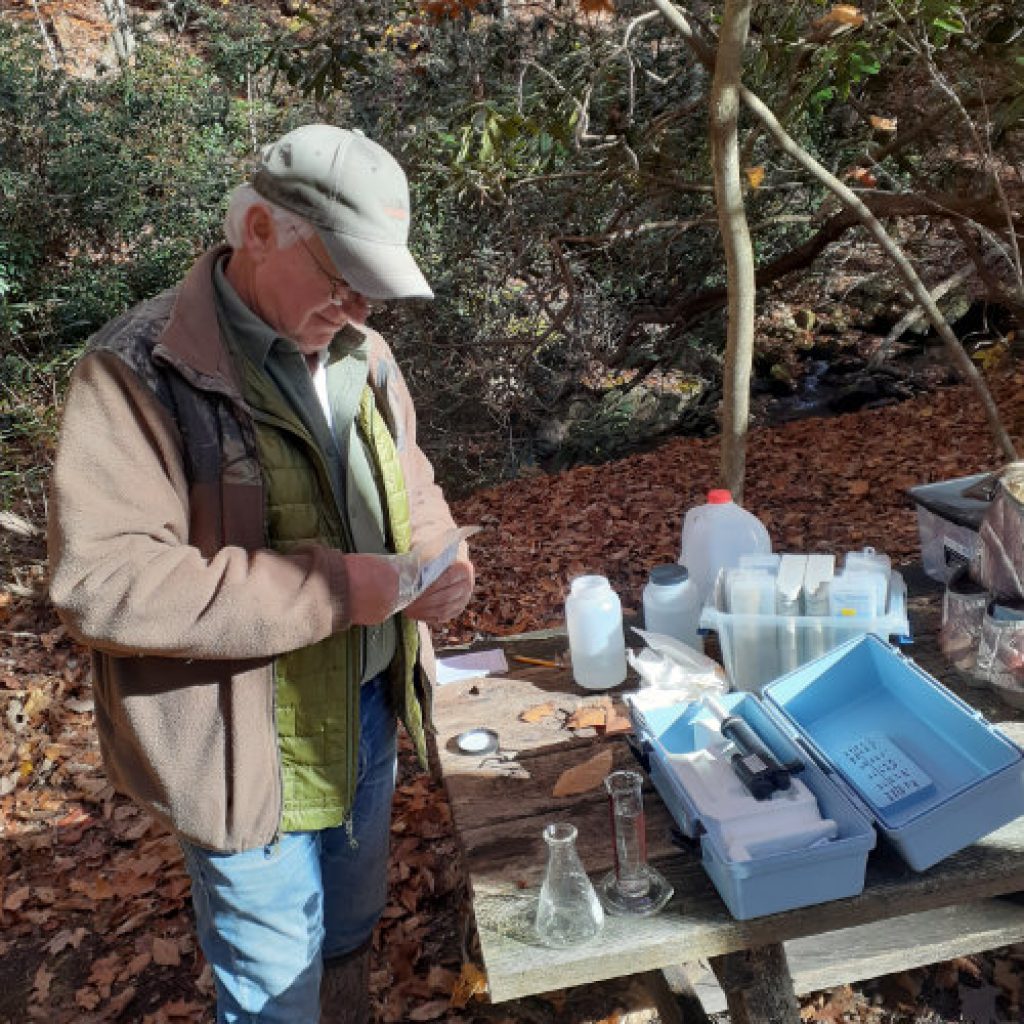
Water quality tests for November:
Air Temperature: 42° F
Water Temperature: 47.5° F
pH: 7.5
Alkalinity: 12.4
Linn Run Gauge: 1.46
Linn Run Flow: 1.9 ft³/sec
A splash of rain brought water levels up a bit but alkalinity also went up. Maybe recent addition of limestone has helped.
FTTU Volunteers Help Treat Linn Run Hemlocks for Woolly Adelgid
Forbes Trail Trout Unlimited volunteers assisted DCNR staff treat trees in Linn Run State Park for the invasive and destructive insect, Hemlock Woolly Adelgid (HWA). The treatment was conducted on October 20 on trees near the stream. This is the second year DCNR has called on Ron Miller and his crew from Forbes Trail for assistance. Trees were treated with an insecticide, mixed by DCNR staff, and injected around the base of the tree by volunteers Denny Hess, Ron Miller, Larry Myers and Bill Somogyi. The systemic treatment is absorbed by the roots and travels through the tree to the needles being attacked by the bugs. Another option used by DCNR in other areas is a predator beetle called Laricobius nigrinus (Ln). The chemical treatment works short term and is effective for up to 5 years or more. The beetles take longer to develop an effective population and is more of a long term solution. HWA is a major concern to TU because it threatens the canopy that keeps the headwaters cool where wild trout reproduce.
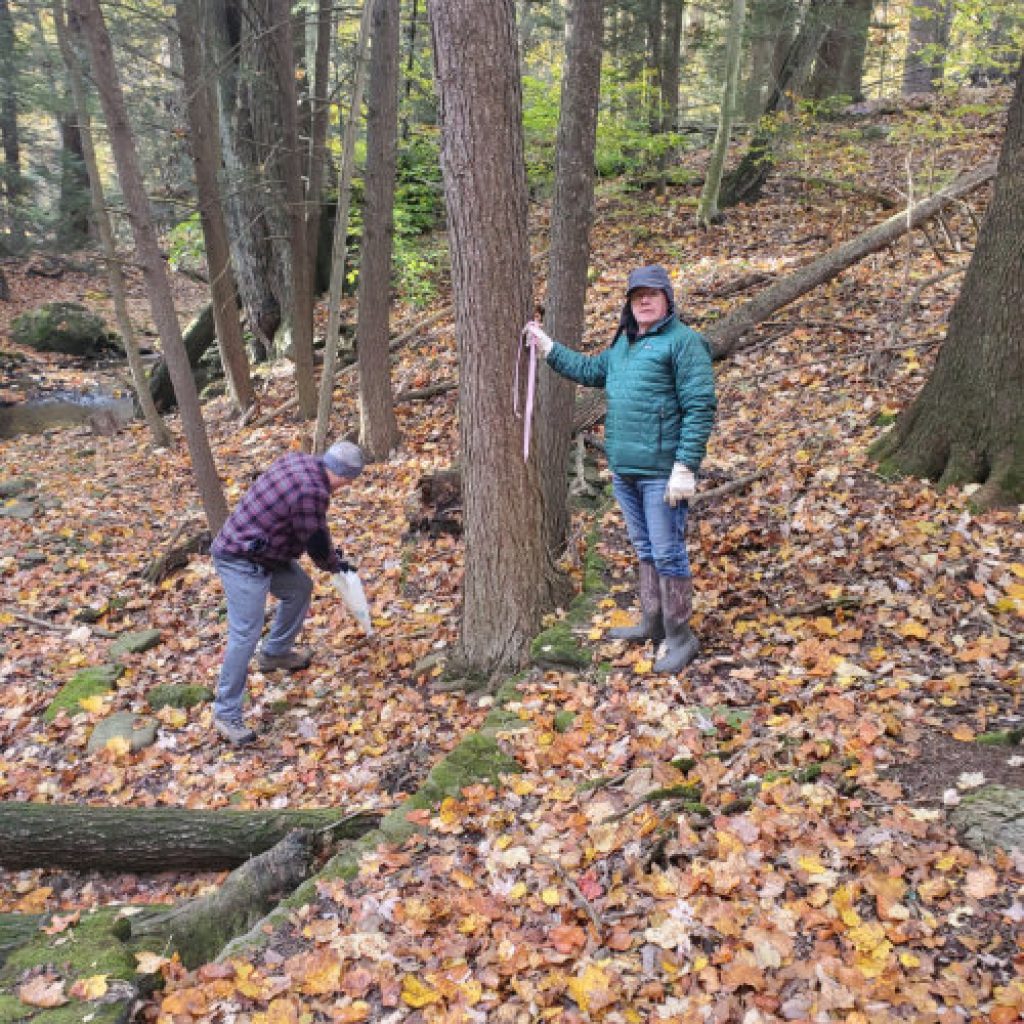
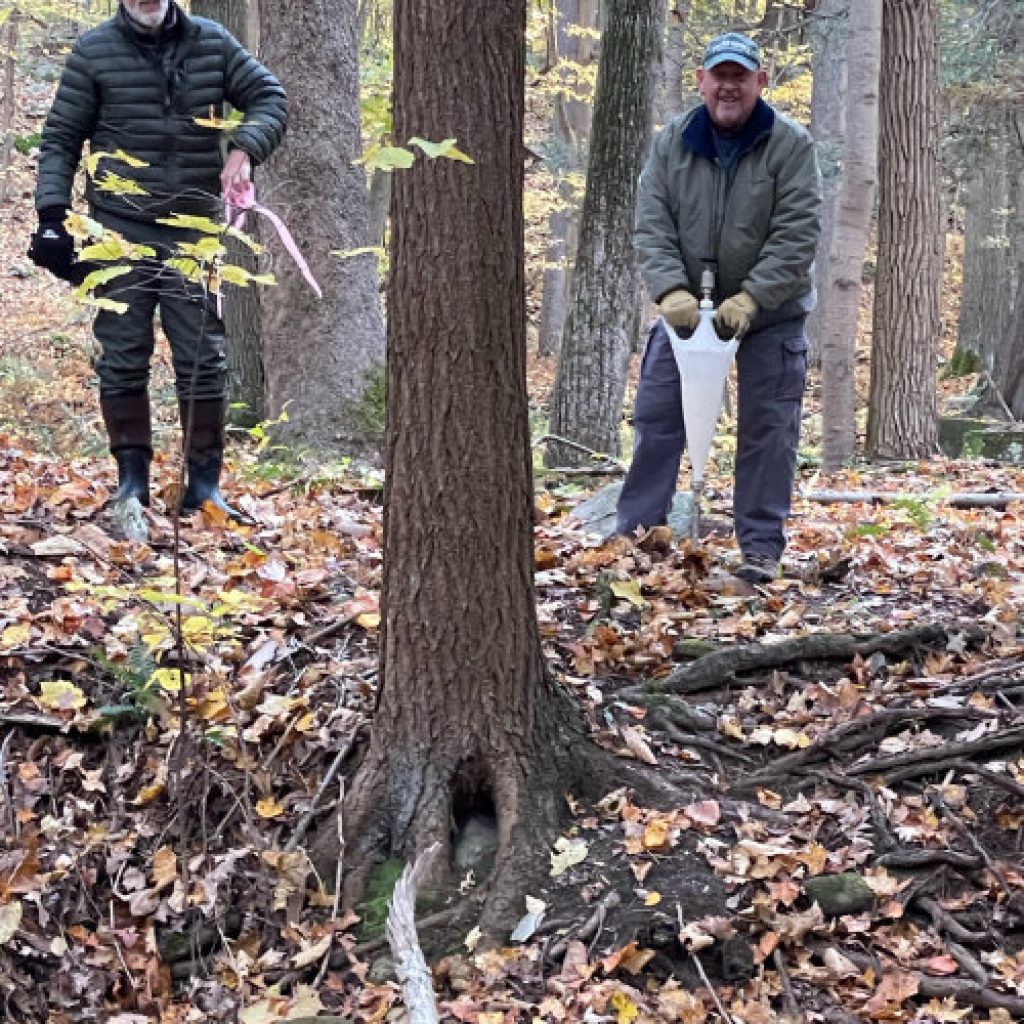
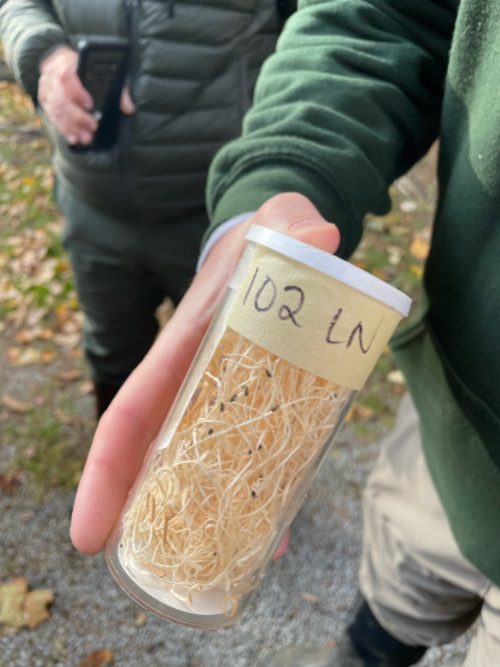
Electro-Fishing Survey in Linn Run Watershed
On Thursday, June 9, 2022 a team of Forbes Trail TU members and Josh Penatzer from the Loyalhanna Watershed Association completed a fish study on Linn Run. The sampling was part of the Coldwater Conservation Plan being developed by FTTU for Linn Run and its tributaries. The crew netted wild brook trout, stocked rainbows, sculpins, blacknose dace and an abundance of stone flies. Josh, who is licensed to use the equipment and conduct the survey, used battery operated probes to stun the fish enough that volunteers could capture them in nets. Once identified and measured, they we all released back into the stream unharmed. The crew sample four sites on Linn Run, including the headwaters, and one location on Rock Run, a major tributary. The detailed results will be made available in the final CCP report later this year.
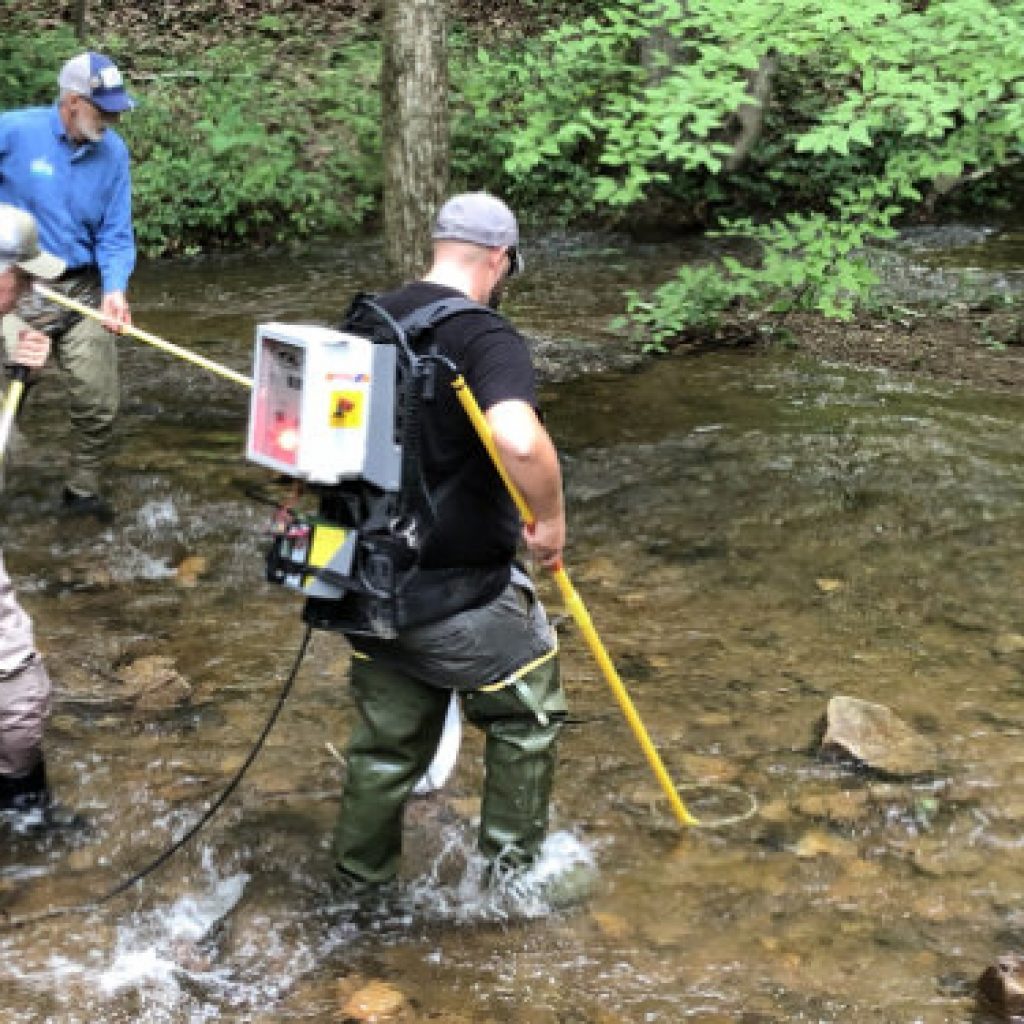
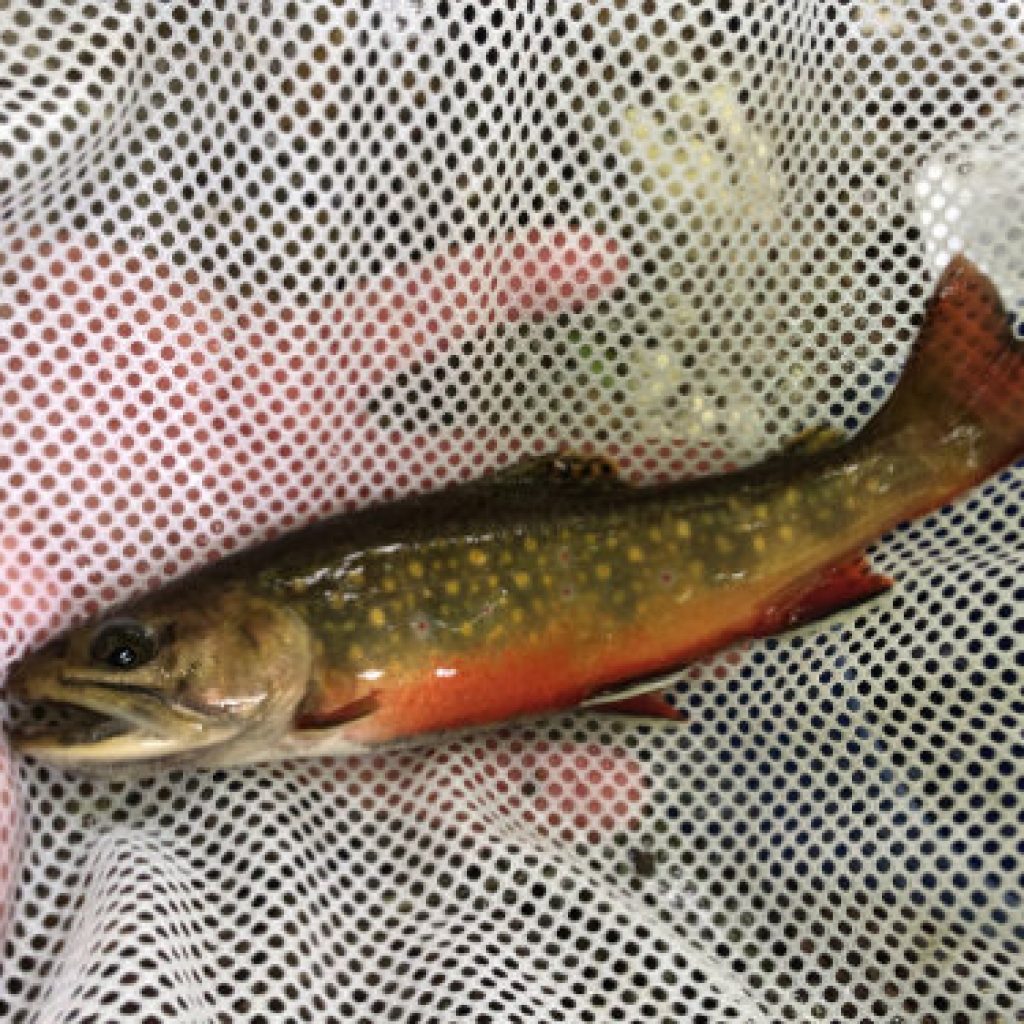
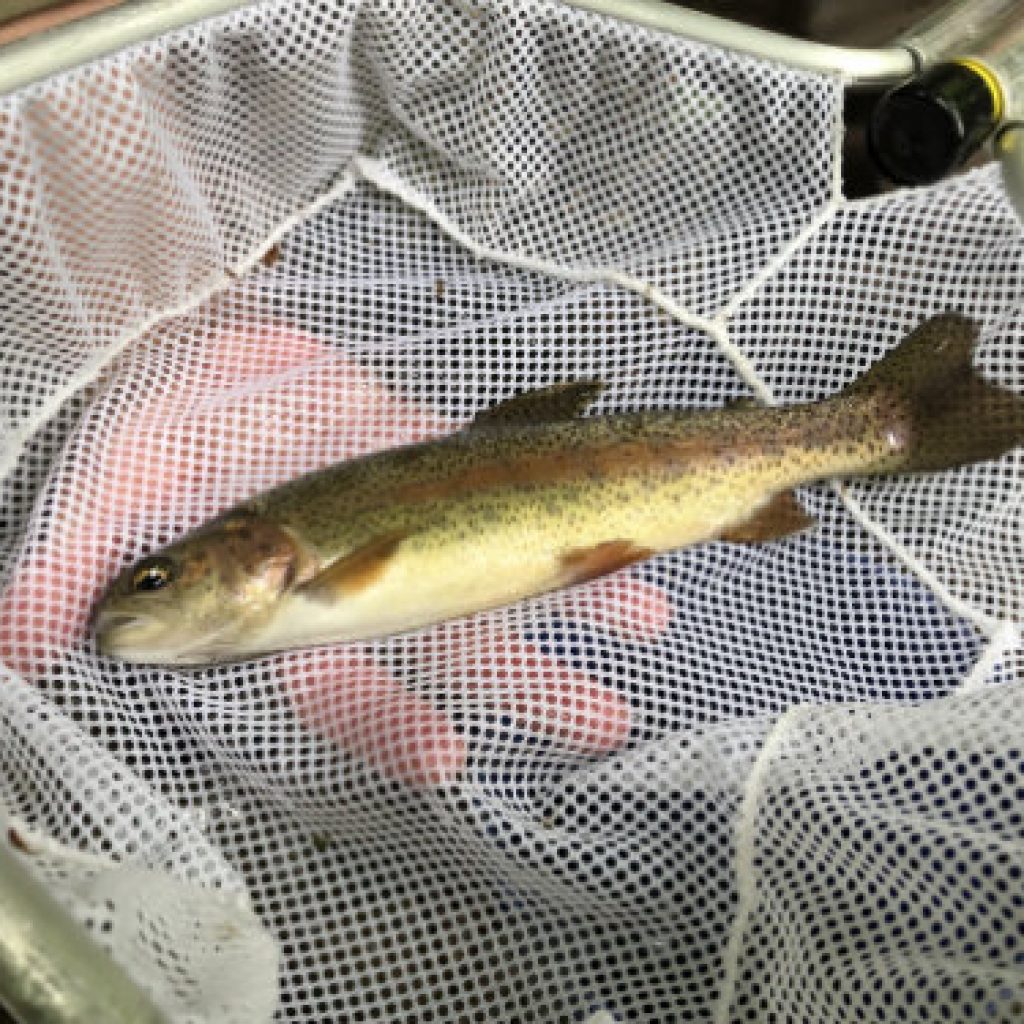
Donegal Lake Receives New Bait Fish Condos
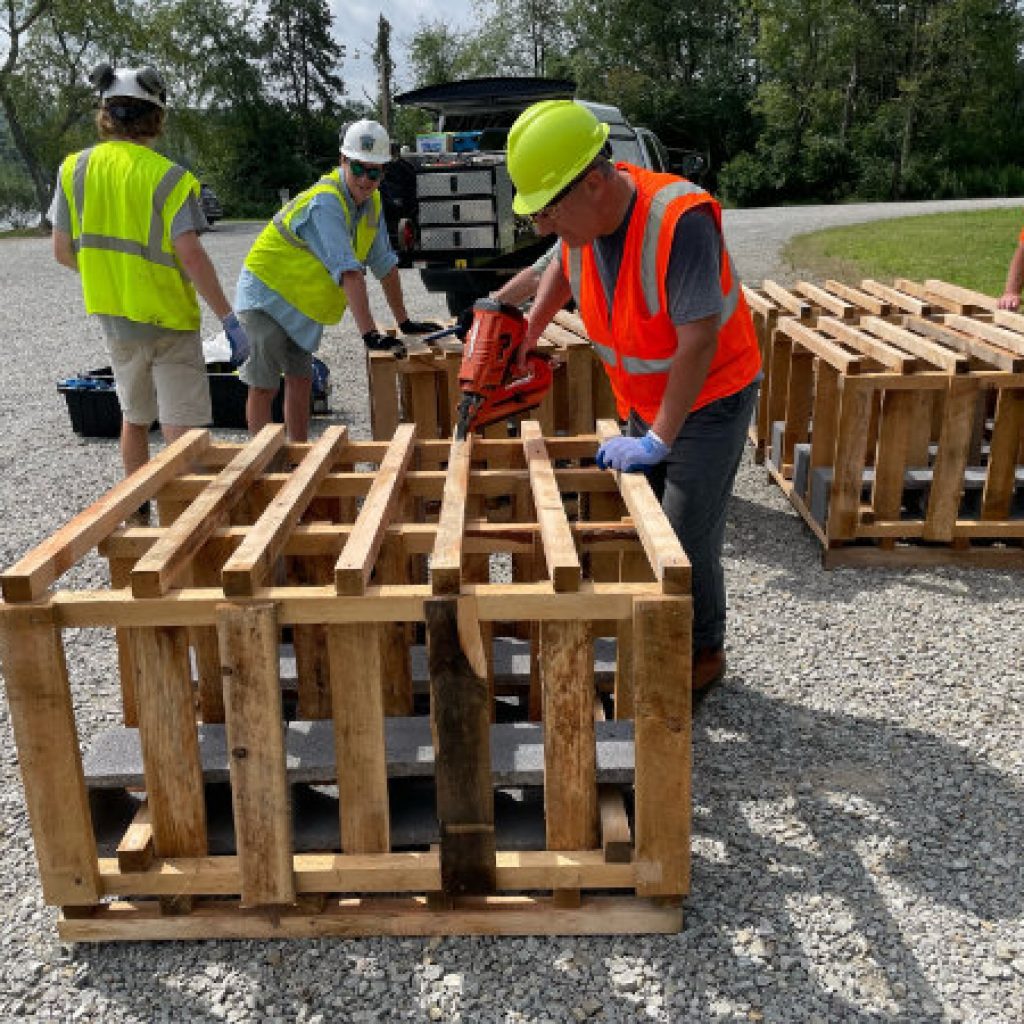
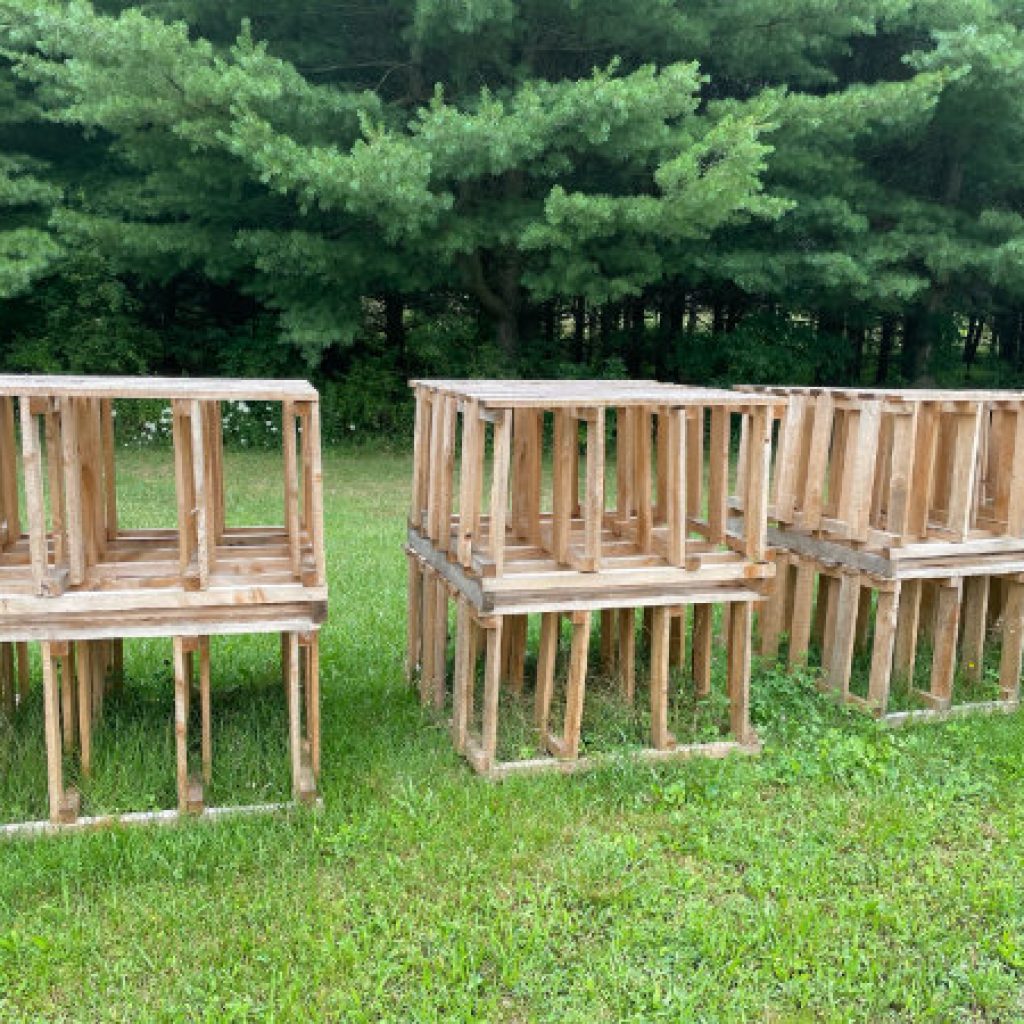
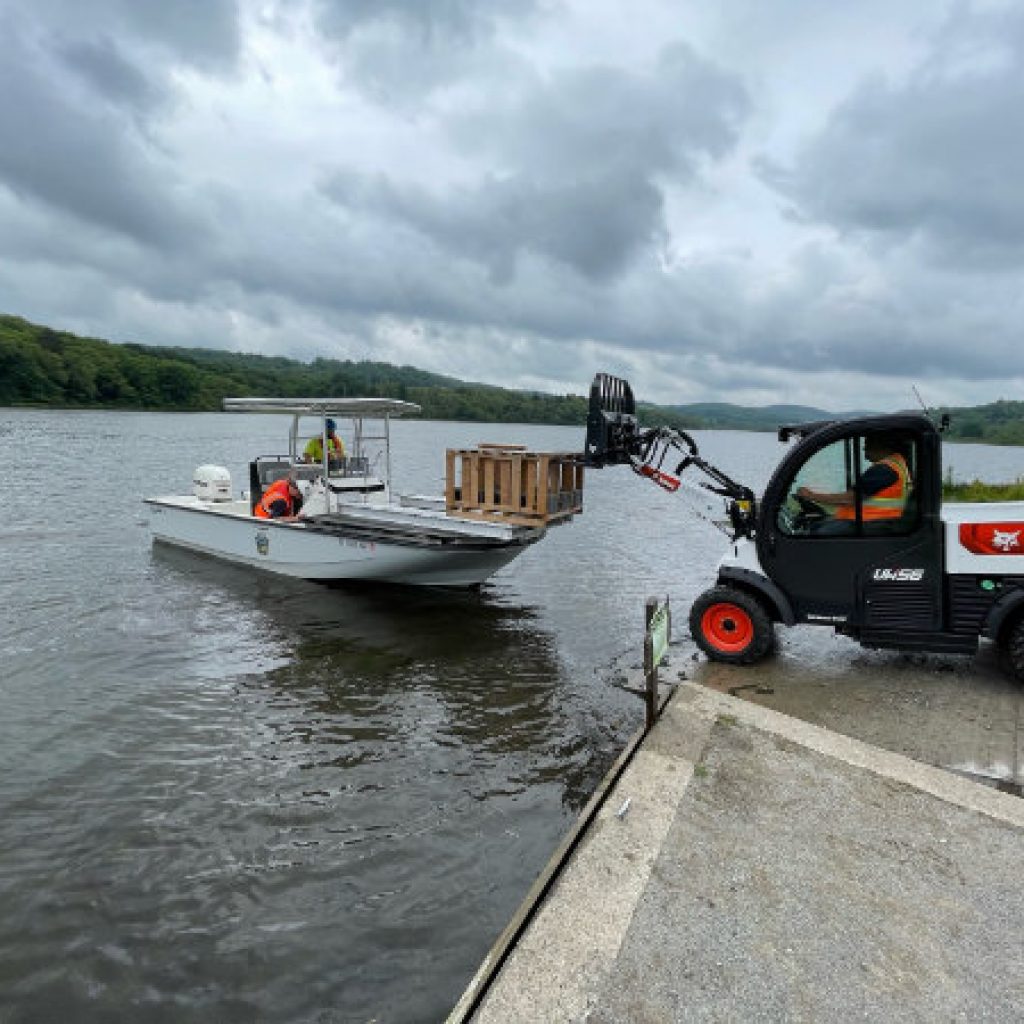
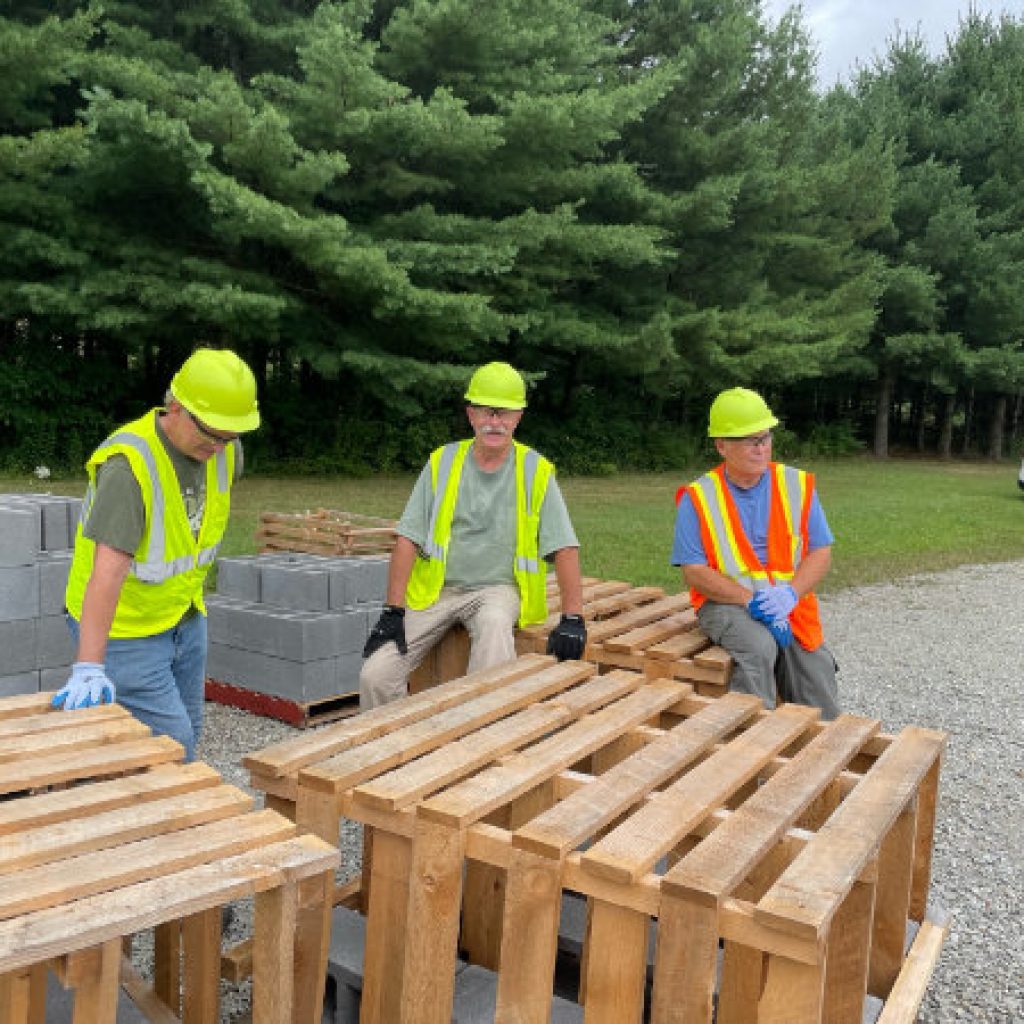
Volunteers from Forbes Trail Trout Unlimited assisted the PA Fish and Boat Commission (PFBC) on Wednesday, July 27, installing new fish habitat structures in Donegal Lake near Stahlstown. The lake is a 90-acre impoundment owned by the Commonwealth and managed by the PFBC. Formally known as the Fourmile Run Dam, it is located in the headwaters of the stream and was originally constructed in 1967. For safety reasons, the breast of the dam had to be replaced requiring the lake to be drained in 2016. In 2019, the new $5.5 million dam was in place and the lake began to refill. It is now at its normal summer level. Restocking of the lake began in early 2020 with fingerling size warmwater gamefish, including largemouth bass. And this past spring it was stocked with trout.
Four PFBC staff from Bellefonte arrived at 10 AM with a trailered boat, fork lift and a pickup truck load of tools and equipment. Within three hours, twenty-five condos, technically referred to as short, vertical plank structures, had been installed throughout the lower half of the lake. PFBC took GPS readings of each location and will eventually post them on their web site to help fishers locate them.
Most of the structures were assembled by Latrobe Senior High School students as part of their wood shop course. Three were built on site with leftover materials. Nine concrete blocks totaling 270 pounds, were placed in each basket to serve as ballast to anchor them to the bottom of the lake. The baskets were carefully loaded with a forklift onto a specially equipped boat with a stainless steel platform in the bow. Once the location was selected, the baskets were pushed into the water to serve as habitat. Only two baskets could be transported at a time.
First, algae and other plant life begins to cover the structures which attract macroinvertebrates, which in turn attract small fish. The structures protect the bait fish from predators as they grow. But they frequently venture out, or game fish raid the structures knowing they are a major sanctuary for food. Anglers, knowing where the structures are located, focus their fishing around these food sources. It’s the beginning, and sometimes the end, of an entire food chain.
The project was funded by a Cooperative Habitat Improvement Project (CHIP) grant through the PFBC. Josh Penatzer, Project Manager for the Loyalhanna Watershed Association, coordinated the project and sent a request for volunteers to Forbes Trail several weeks in advance. FTTU members are always anxious to assist with boots-on-the-ground projects such as this. Seven volunteers showed up and worked closely with Josh and the PFBC staff to complete the project. This was obviously not the first rodeo for the PFBC crew or Josh. Within thirty minutes of arrival, they were handing out safety gear to the volunteers and loading the baskets onto the boat. It was one of the smoothest and most efficient operations we’ve ever assisted with. Forbes Trail appreciates the opportunity to be part of this project. As expressed in one of the photos, a project like this requires an inspector, supervisor and visionary!
Limestone Sand Delivered to Rock Run Headwaters
May 17, 2022, Denny Hess led chapter volunteers Joe Bilotta, Bob Shusko and Monty Murty in a successful project to replace limestone in the headwaters of Rock Run, the largest tributary of Linn Run. Without the large volume of Rock Run’s cold waters, Linn Run may not be a trout stream in warm weather. Unfortunately the headwater springs that form Rock Run emerge from the ground at pH 4.5 and sometimes lower, way too acid for trout.
With a Growing Greener grant in early 2000’s Forbes Trail Chapter did something about that. We built a hardstand dump station in the Rock Run headwaters, and with a site prepared to facilitate gradual leaching of fine glass-grade limestone sand into the stream we began delivering acid-reducing limestone into the stream. It was left to us to keep funding the limestone. These sites are extremely remote and difficult to reach hiking, much less driving to, especially with a semi-tractor/trailer hauling 25 tons of steaming hot limestone.
May 17th we received the semi-annual delivery, and the huge and full truck got stuck in the mud! One of the personally satisfying things about volunteering with FTTU is working with friends who know how to work. Once Denny made the call that the truck wasn’t going to self-extract, the team instantly dived into organized work. Key to extracting the truck was Joe Bilotta driving back down the mountain and returning with his big Ram dually. Salvaging a big hook and clevis pin from Denny’s Jeep, and with buckets and shovels we got the wheels to grip and with Joe pulling we got the monster out of the mud “Highway from Hell” style!
Result; a fresh batch of limestone is ready to be moved into the stream over the next two years when we’ll do it again.
After almost 20 years of chapter hard labor and funding, brook trout have been restored to Rock Run to the extent that this past February the PA Fish & Boat Commission reclassified Rock Run from dead to a Wild Reproducing Trout Stream, Brook Trout no less, our only native stream-dwelling trout.
Well done good and faithful servant Ralph Koscianski and the members you’ve trained to follow in your footsteps restoring native trout.
With sore hands and aching backs yesterday we just stood there and looked downstream dumbfounded and thinking “The things we do for trout”!
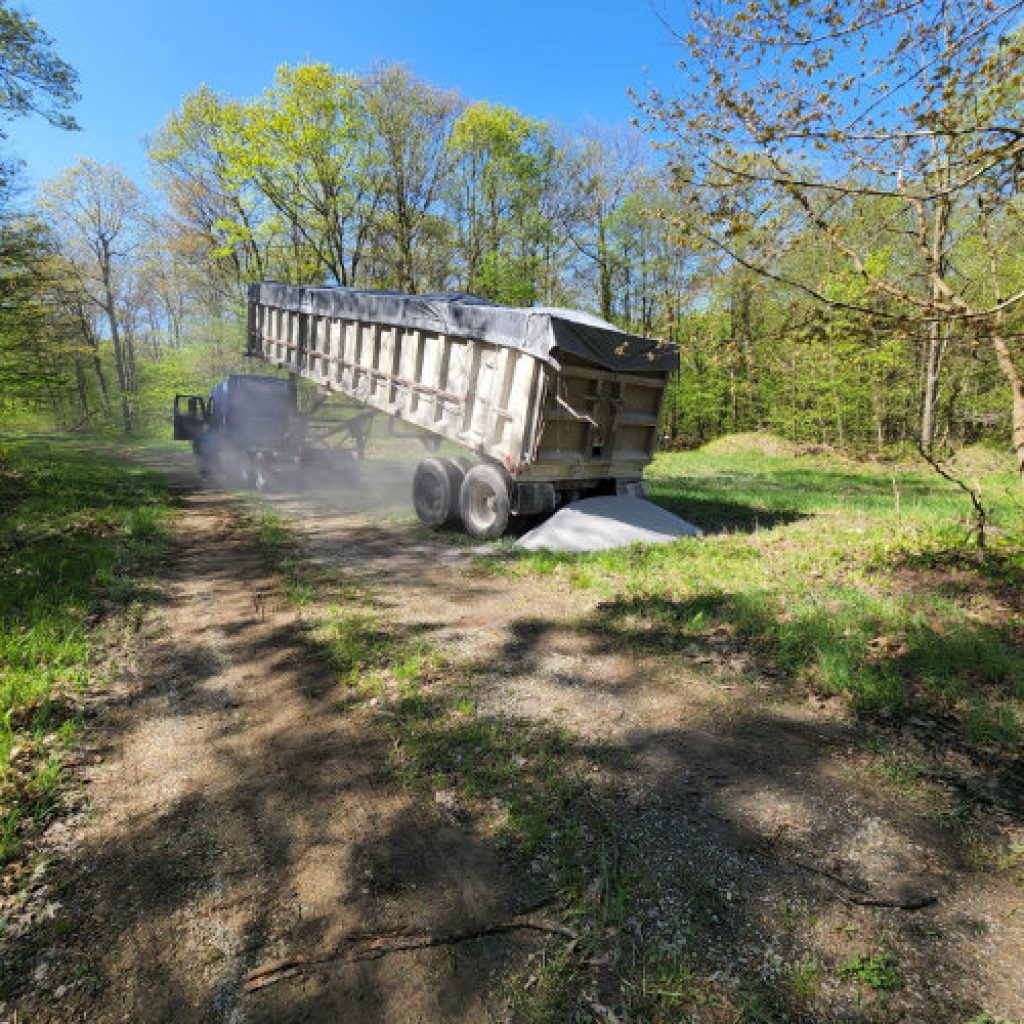

DEP’s Integrated Water Quality Report Now Available.
Did you know that there are 85,568 miles of rivers and streams in Pennsylvania? They’re all covered in the PA Department of Environmental Protection’s “2022 Integrated Water Quality Monitoring Report” now available for viewing here – 2022 Integrated Water Quality Monitoring Report
This assessment of impaired waters in the Commonwealth is conducted and updated every two years. The report provides a wealth of information about what streams are not meeting EPA’s water quality standards and for what parameters they fail. This is yet another tool that Trout Unlimited can use to help identify trout streams that could benefit from remediation services and help us prioritize where we want to invest resources.
Unfortunately, the 2022 report shows an increase in impaired stream miles of over 2,000 miles since the last time the report was done in 2020.
A description of the report can be found in the PA Environment Digest.
There is an interactive map where you can research any stream in Pennsylvania and see if it is attaining its intended use for aquatic life or recreation or if it is impaired by any number of causes such as mine drainage or siltation.
It’s best to view the demonstration video first before exploring the map.
Link for the Map
Link for the Demonstration Video
The report contains a wealth of detailed information. You can spend hours researching you favorite streams or seek out information on ones you’d like to explore.


